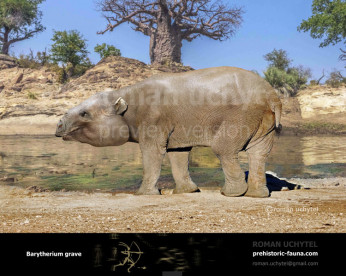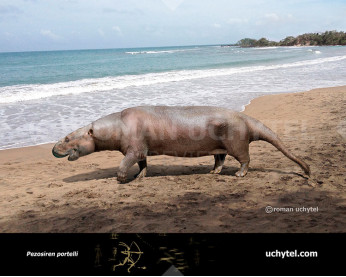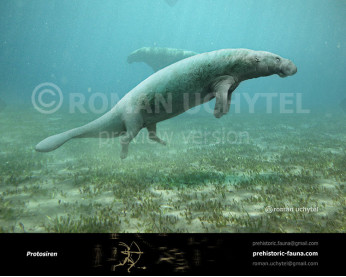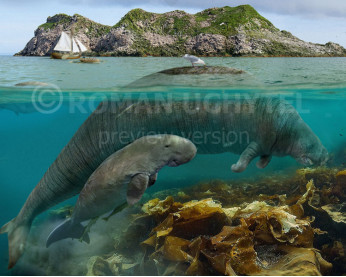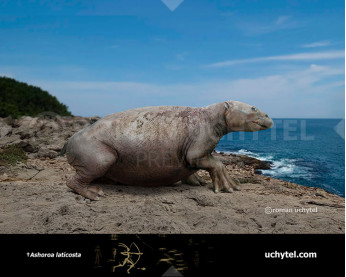Steller's Cow (Hydrodamalis gigas)
104104Steller's or sea cow (Hydrodamalis Retzius, 1794)
Order: Sirenia
Family: Dugongidae
Time period: late Miocene - Holocene of Pacific ocean
Size: 8 m in length, 4000+ kg of weight
Typical representative: Hydrodamalis gigas Zimmermann, 1780
Steller's or sea cow is an extinct mammal from sirens order. Reached 6-9 m long and weighed 4-8 tons. Small head smoothly passes into a huge trunk, which ended with a forked tail, resembling a whale's tail. As cetaceans Steller's cow has no hind pair of legs. Was opened in 1741 by G. Steller. As a result of predatory fisheries to the 1768 Steller's cow had been completely destroyed. Since its official opening and to the complete disappearance has passed just 27 years. Lived in the waters of the Commander Islands and is probably off the coast of Kamchatka and Northern Kuriles.
This animal has no teeth because its main food was the largest marine algae and other aquatic plants. Because of the herbivorous diet of these extinct animals it’s called sea cows. Fossil remains of sea cows are close or even identical to Steller was found in Pacific coastal areas from California to Japan.
The population of sea cows, described by Steller, was a pathetic remnant of the once-prosperous genus, destroyed by the Pacific natives.
Steller's or sea cow (Hydrodamalis Retzius, 1794)
Order: Sirenia
Family: Dugongidae
Time period: late Miocene - Holocene of Pacific ocean
Size: 8 m in length, 4000+ kg of weight
Typical representative: Hydrodamalis gigas Zimmermann, 1780
Steller's or sea cow is an extinct mammal from sirens order. Reached 6-9 m long and weighed 4-8 tons. Small head smoothly passes into a huge trunk, which ended with a forked tail, resembling a whale's tail. As cetaceans Steller's cow has no hind pair of legs. Was opened in 1741 by G. Steller. As a result of predatory fisheries to the 1768 Steller's cow had been completely destroyed. Since its official opening and to the complete disappearance has passed just 27 years. Lived in the waters of the Commander Islands and is probably off the coast of Kamchatka and Northern Kuriles.
This animal has no teeth because its main food was the largest marine algae and other aquatic plants. Because of the herbivorous diet of these extinct animals it’s called sea cows. Fossil remains of sea cows are close or even identical to Steller was found in Pacific coastal areas from California to Japan.
The population of sea cows, described by Steller, was a pathetic remnant of the once-prosperous genus, destroyed by the Pacific natives.

-797x638.jpg)
-797x638.jpg)
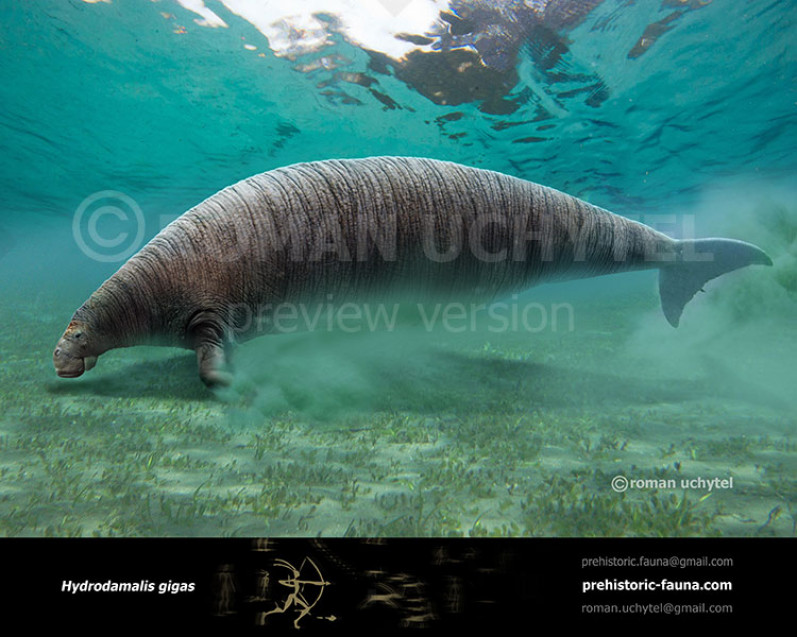
-70x56.jpg)
-70x56.jpg)

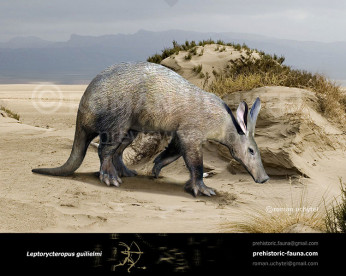
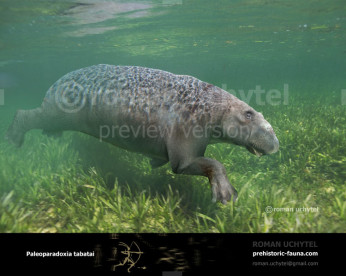
-346x277.jpg)
